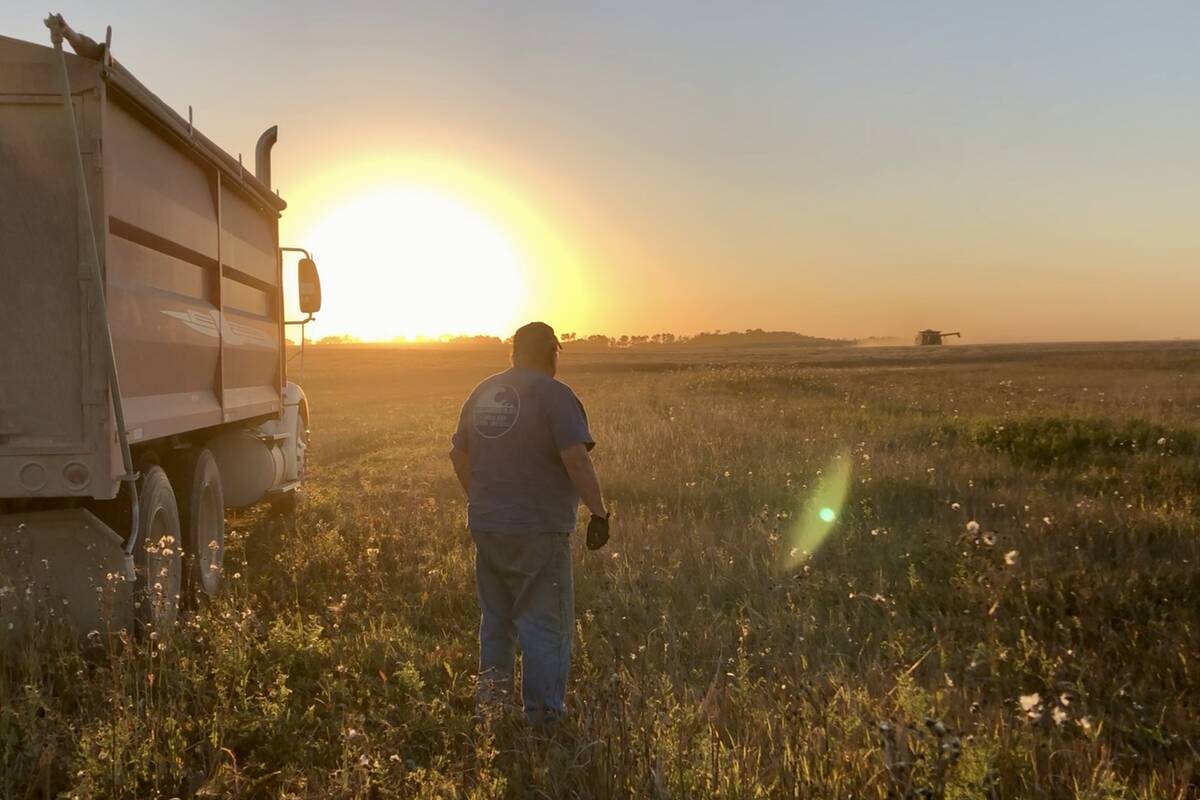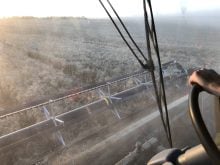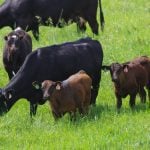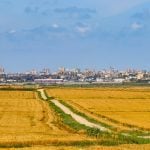NORQUAY, Sask. – Farmers have long known the value of alfalfa as a green manure or natural fertilizer, but the economics did not support the use of alfalfa pellets as commercial fertilizer until recently.
A worldwide organic movement has now helped turn alfalfa pellets as fertilizer into a paying proposition, said Doug Will, general manager of the Western Alfalfa Milling Co. Ltd. in Norquay, who sells an organic fertilizer called Alfalfa Green Soil Nutrition.
“Commercial (synthetic) fertilizer was cheap; it didn’t seem to make sense to process (alfalfa) and plow it back into the soil,” he said.
Read Also

VIDEO: Bittersweet harvest for this family farmhand
Bruce Burnett helps his brother harvest wheat and canola for the last time on the family farm in Manitoba where they both grew up.
Will, who farms at Tisdale, Sask., and Norquay with his son, always worked alfalfa left over from cattle feeding into his fields. He also used alfalfa pellets on his yard.
In 2000 he bought the Western Alfalfa Milling Co. Ltd. with three partners.
Like other dehydration plants, the mill’s main export market has been alfalfa pellets for livestock feed, but it has since expanded into the organic fertilizer business, targeting the home gardener, organic farmers and oil and mine land reclamation projects across North America.
Alfalfa Green contains nitrogen, phosphorous, potassium and calcium as well as naturally occurring micronutrients.
Basic organic practices are used when producing Alfalfa Green, which is grown with only rain water and sunlight. The pelleting process uses no binders because the extreme heat and pressure releases the natural pectin in the alfalfa, causing the pellet to bind and eliminate weed seeds.
Will said Alberta, Saskatchewan and Manitoba could produce alfalfa on dryland acres to supply fertilizer for golf courses, back yard gardens and organic farms.
The organic fertilizer is sold in 50 gardening centres and nurseries across Canada, he said.
Joe Bloski of Early’s Farm and Garden Centre in Saskatoon said sales are good.
“Alfalfa Green is showing a lot of promise,” he said, adding that few commercial organic fertilizers are available for those seeking alternatives to synthetic products.
Bloski likes the idea of supporting Saskatchewan agriculture and industry.
With increased environmental regulations becoming commonplace, Will said alfalfa fertilizer can offer an alternative for people living in cities that ban the use of chemicals and synthetic fertilizer on lawns and gardens.
Alfalfa Green is a 100 percent plant protein that is non-toxic and safe to pets and contains no animal byproducts.
The American Rose Society reports alfalfa produces greener growth and stronger stems within a week of application while the Canadian Iris Society calls alfalfa an excellent supplement.
Field trials at the University of Southern Arizona, which grew durum wheat with Alfalfa Green, yielded 116 bushels per acre, compared with 105 bu. in traditionally fertilized plots.
Alfalfa Green was found to improve the water-holding capacity, while producing more leaves at earlier stages of growth.
Greenhouse trials at Alberta Agriculture’s Crop Diversification Centre on sodium chloride-contaminated soil used several soil additives, including the Norquay mill’s Alfalfa Green product.
Results showed that the sodium uptake significantly increased with the application of soil amendments, particularly where alfalfa pellets were applied.
Western Alfalfa Milling Co. produces an average of about 80 million pounds of product per year and a rapidly growing percentage of that is Alfalfa Green.
In 2004-05 the company produced 450,000 lb. of certified organic product of which about half is organic feed and rest Alfalfa Green. In 2005-06 the certified organic number climbed to about seven million lb. and in 2006-07 the forecast is for 20 million lb., or about 25 percent of the plant’s production.
“I’m pleased with what we have achieved,” Will said.
Alfalfa grower Ron Harper agreed, commending Western Alfalfa Milling for reaching beyond the dehy business and exploring new markets to sustain it into the future.
“The world is always changing and if you want to be successful, you have to change with it,” he said. “In any business, you have to progress or you die.”
The alfalfa dehy industry, traditionally oriented to making feed alfalfa pellets for the Asian market, has been hit hard by rising energy costs and stiff competition from subsidized European product.
Harper, who is also the MLA for Regina Northeast, grows alfalfa on contract for the plant at his farm in Norquay, an area considered excellent for alfalfa due to the short growing season and high rainfall.
Prairie farmers have traditionally grown commodities and let others add value to them, he noted.
That type of farming used to produce a comfortable living for growers, but it is no longer the case.
“If you want to maintain a viable ag industry here, I think we have to change,” he said, citing the added benefits of keeping profits and jobs at home.
“It’s great for the producers and great for the area and good for the province.”
Will believes non-feed uses of alfalfa will one day eclipse feed uses and has invested thousands of dollars on research and development to explore alternatives and application rates.
He cited the possibilities of fractionating the juices from alfalfa for pharmaceutical and nutraceutical products. The company is also exploring alfalfa’s use to remediate soil damaged in the oil industry.
The plant employs up to 60 local workers in its busy summer season, shrinking to about eight in winter.
It cash rents land and has contracts with local growers to harvest 25,000 acres of alfalfa.
















